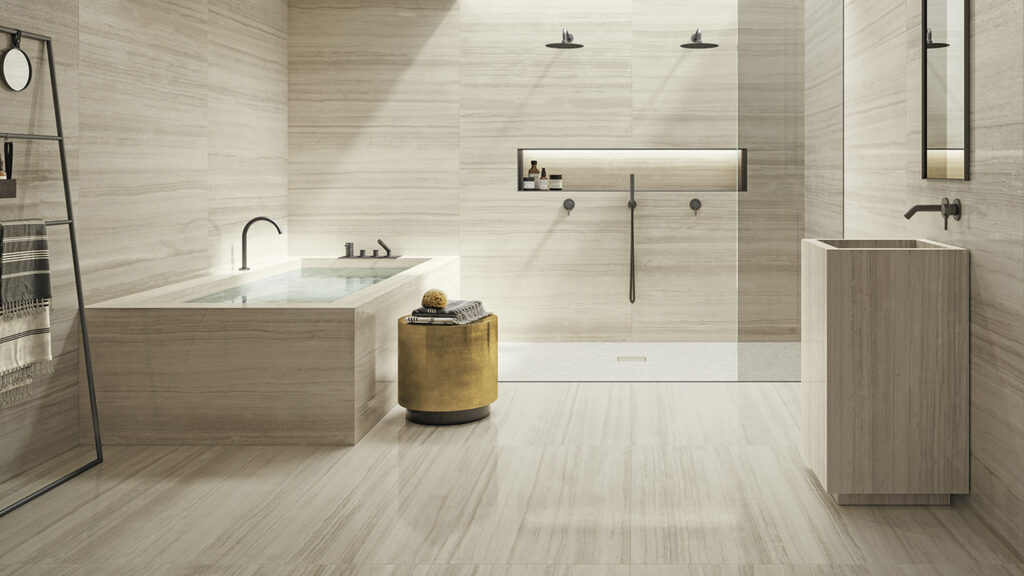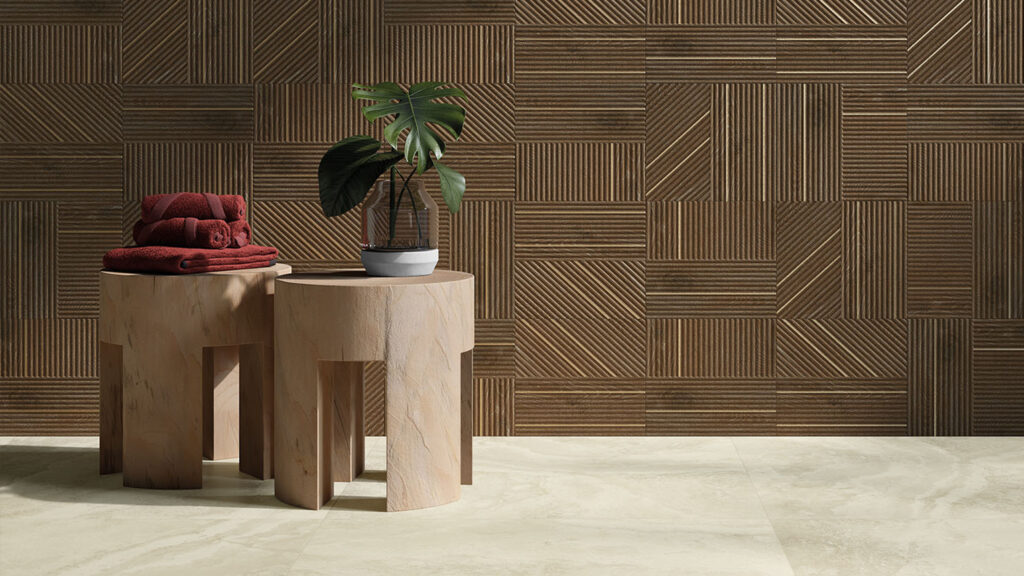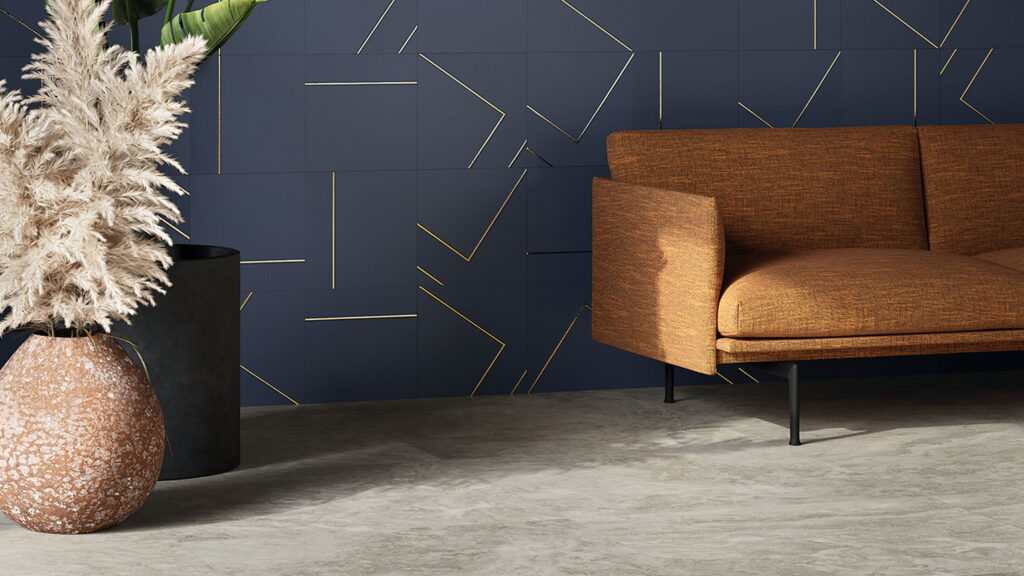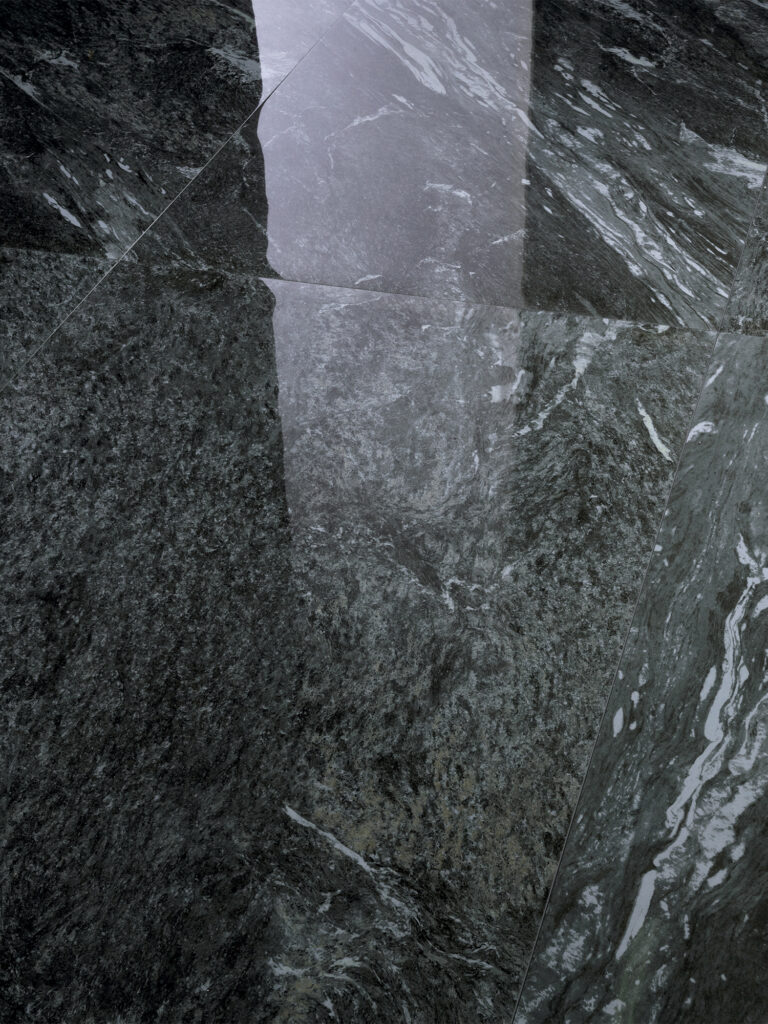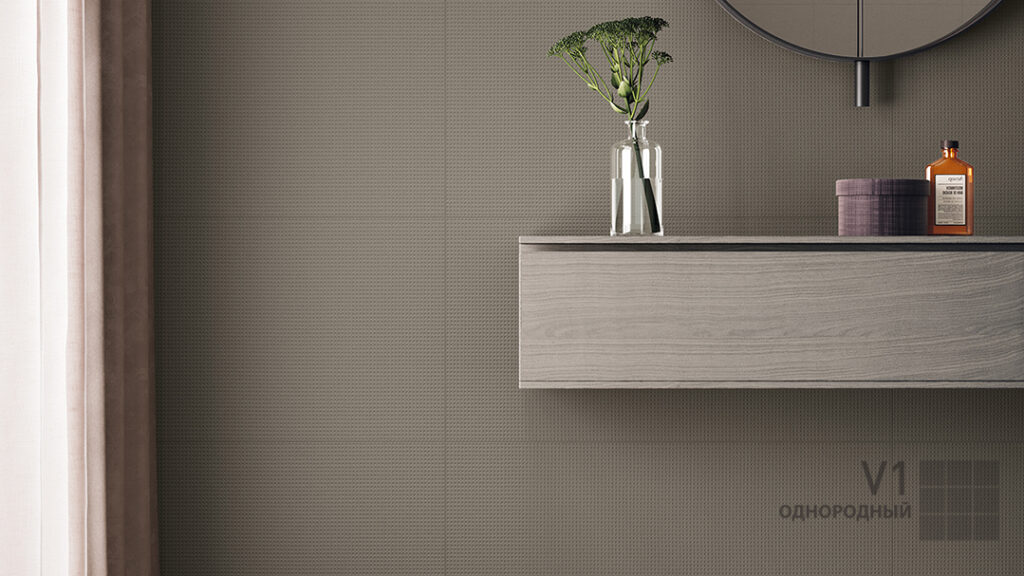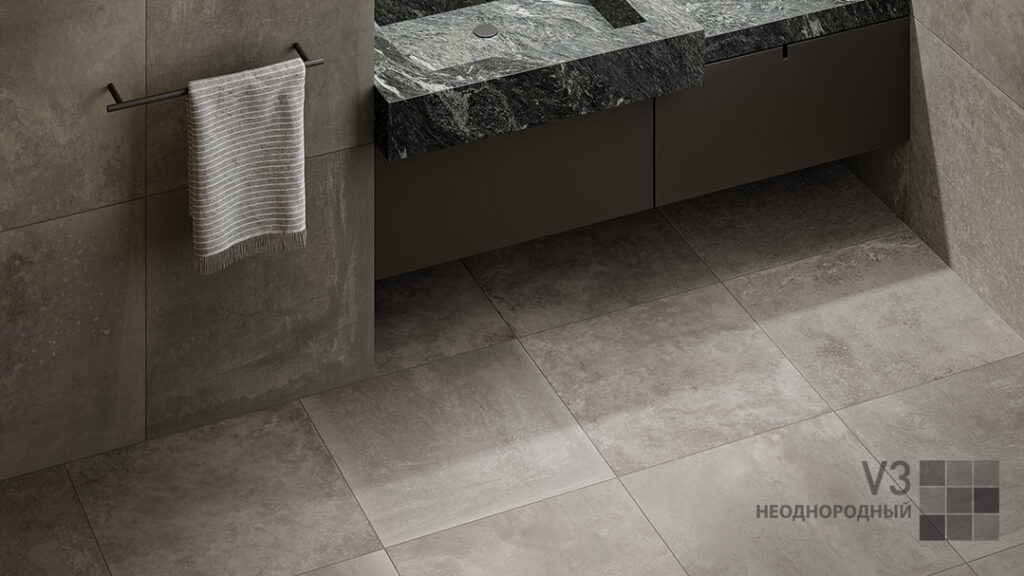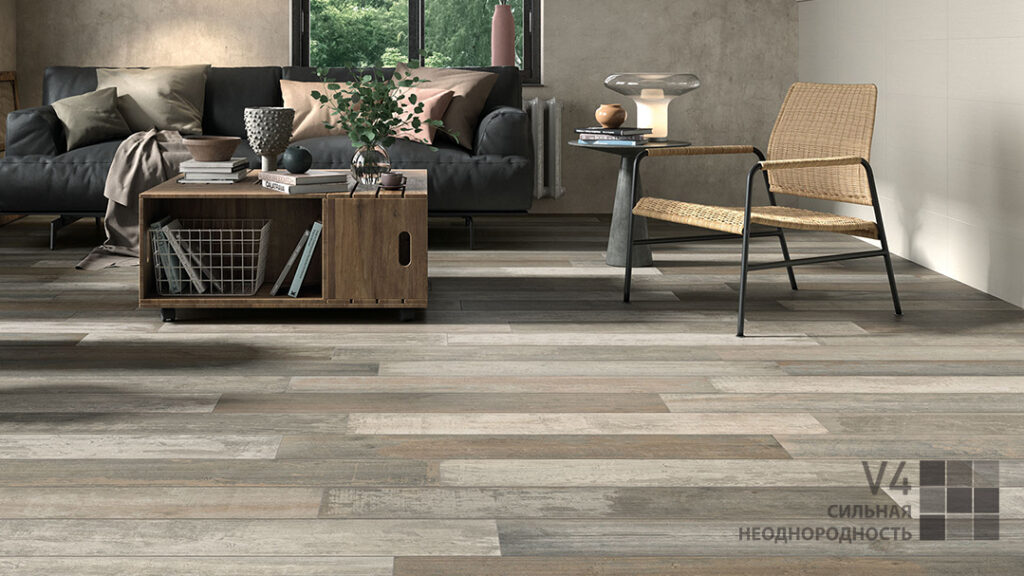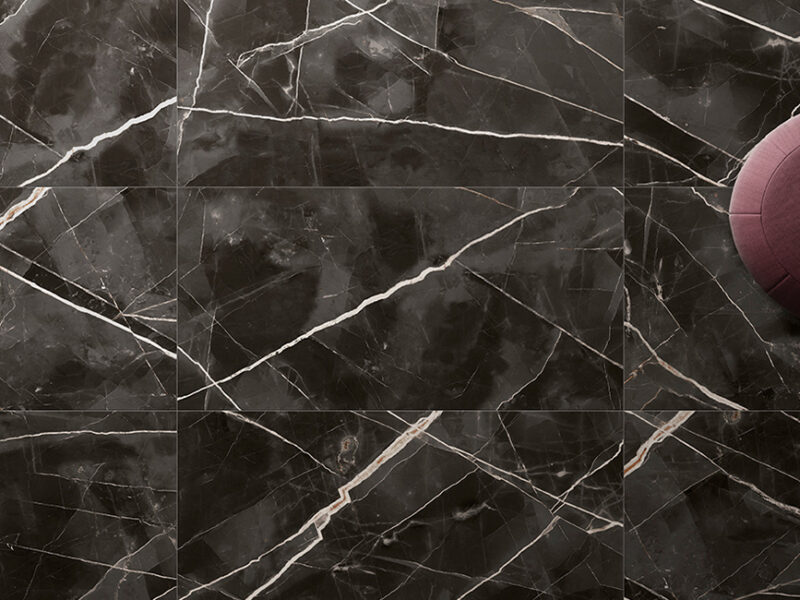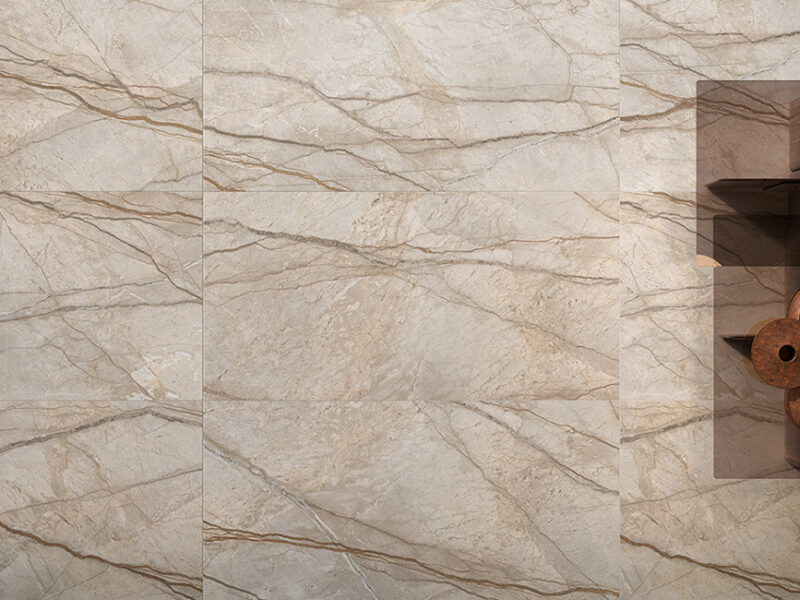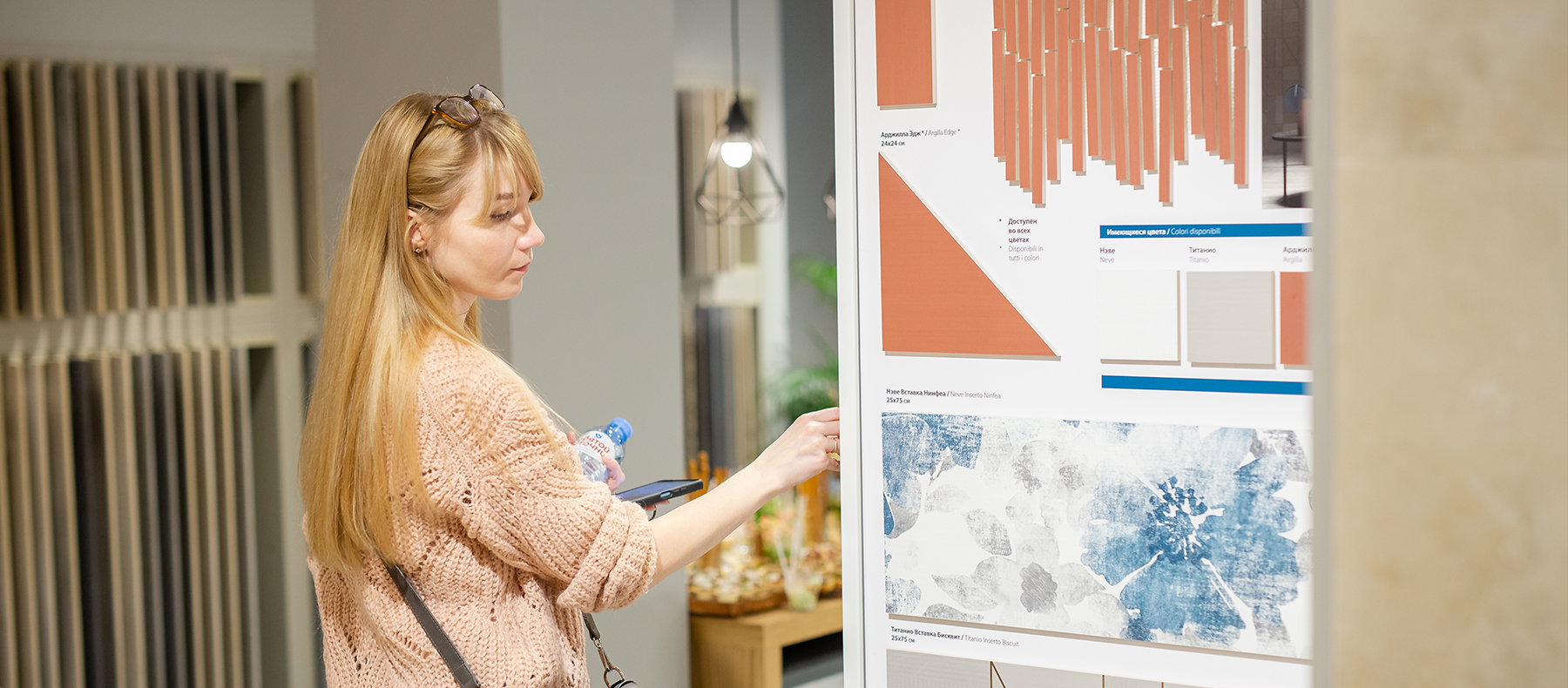
Practical tips for choosing porcelain stoneware
When renovating or designing a living space or common area, there almost always comes a moment when you need to choose the finishing materials.
Porcelain stoneware is one of the best solutions available in the modern design world. This is largely thanks to its unparalleled technical characteristics and performance, as well as a rich palette of colors, textures, formats, and surface types. Combined, these factors allow you to find a unique solution for any room and save a lot of money by choosing a practical and durable material that meets all the project requirements.
The first thing to ask yourself is where you’ll be using porcelain stoneware.
If you need it for flooring works, you should choose the tiles based on the characteristics of the space you’ll be working in. Few people know it, but porcelain stoneware can be used for almost all types of interior finishing (provided that the space itself and the surfaces meet the requirements):
- You can start by laying the tiles in the hallway and then decorate the living area, kitchen, and bathroom in the same style.
- You can choose the safest possible material for the bathroom floor and then line the walls and even the sink or shower tray with porcelain stoneware tiles of similar color and texture from the same collection.
- You can use a wide range of porcelain stoneware decors marked with the PORCELAIN STONEWARE symbol to decorate walls, floors, shower areas, and accent zones in commercial spaces. They add charm to the interior and last longer thanks to their excellent technical characteristics
- For walls, you may use exquisite white clay decors marked with the WALL TILES symbol to add individuality, character, and splendor to your project. Please note that these decors can only be used for wall cladding.
- And don’t even get us started on the creative potential of the 120×278 maxi size! For more information on why it’s so great, see the section Maxi Size.
Surface Type
Once you know how you’ll be using porcelain stoneware, you should take the time to learn more about tile surface characteristics.
For example:
- Natural, aka matte This is a basic surface type that doesn’t require any secondary treatment. With a slip resistance rating of R9, it is the most affordable yet one of the safest surface types out there. The high slip resistance rating makes it suitable even for bathrooms and locker rooms, but not for places of direct contact with water.
- Structured (grip) surface is the safest in terms of use. Structured tiles are embossed at the time of pressing to ensure higher safety ratings of R11 to R13. Manufacturers also sometimes cover the tiles with anti-slip powder.
- Italon’s most dazzling surface is named lux. It has a mirror-like sheen, deep graphics, and a smooth texture.
If you want to learn more about Italon’s surface range, read the article “Everything You Need to Know about Italon Porcelain Stoneware Finishings“, in which we explain the differences between various types of surfaces.
Tone and Caliber
To talk about such important selection criteria as tone and size, we first need to understand how porcelain stoneware is made.
Porcelain stoneware production is a technologically and chemically complex process that uses quartz sand, kaolin clay, and feldspar. These natural mineral components are mixed into a homogeneous mass (casting slip) and dried into granules, which are then stored and mixed with dyes in special tanks. The resulting mass is molded under high pressure, dried, and fired in an oven at extreme temperatures.
What makes it difficult for the customers is that each mix of natural materials produces a new batch of porcelain stoneware.
Each new batch may differ from the previous ones in tone and caliber, i.e. the tiles’ actual size. Although there is a reference tone and caliber the manufacturers strive to match, the resulting batch may be a tone lighter or darker. This is something to keep in mind if you don’t plan to purchase all your tiles at once.
Therefore, it is vital to make sure all the tiles have the same tone and caliber. For example, in AC 6, AC stands for the tone, and 6 is the caliber. For the nominal size of 60x60cm, caliber 6 means the tile will have an actual size of 596x596mm after rectification.
Rectified or Not?
What is rectification? You’ve probably heard that tiles come in rectified and non-rectified varieties. It’s very simple: after firing, tile edges are additionally ground. Such tiles have flat, 90-degree edges for minimal joint size.
V SHADE Coefficient
V SHADE is an important factor affecting space aesthetics. It shows how uniform the graphics will be and how similar one tile will be to another in terms of pattern. Italon meticulously recreates the aesthetics of natural materials, so there will be collections in which one tile will be very different from another. They will have a coefficient of V3 or V4. If you want muted tiles with uniform graphics, opt for collections with a coefficient of V1.
In this article, we’ve looked at the key things on which to focus your attention when choosing porcelain stoneware. They will help you to avoid mistakes and choose the series and material you’ll enjoy throughout their entire service life.
We invite you to one of our Italon Experience showrooms in your city to feel the atmosphere of each of our tile series. If your city doesn’t have an Experience showroom, worry not. You can find a distributor or retail outlet in your area in the Dealer Locator section.
We wish you success in your renovation efforts. Don’t forget to check out Italon collections!

